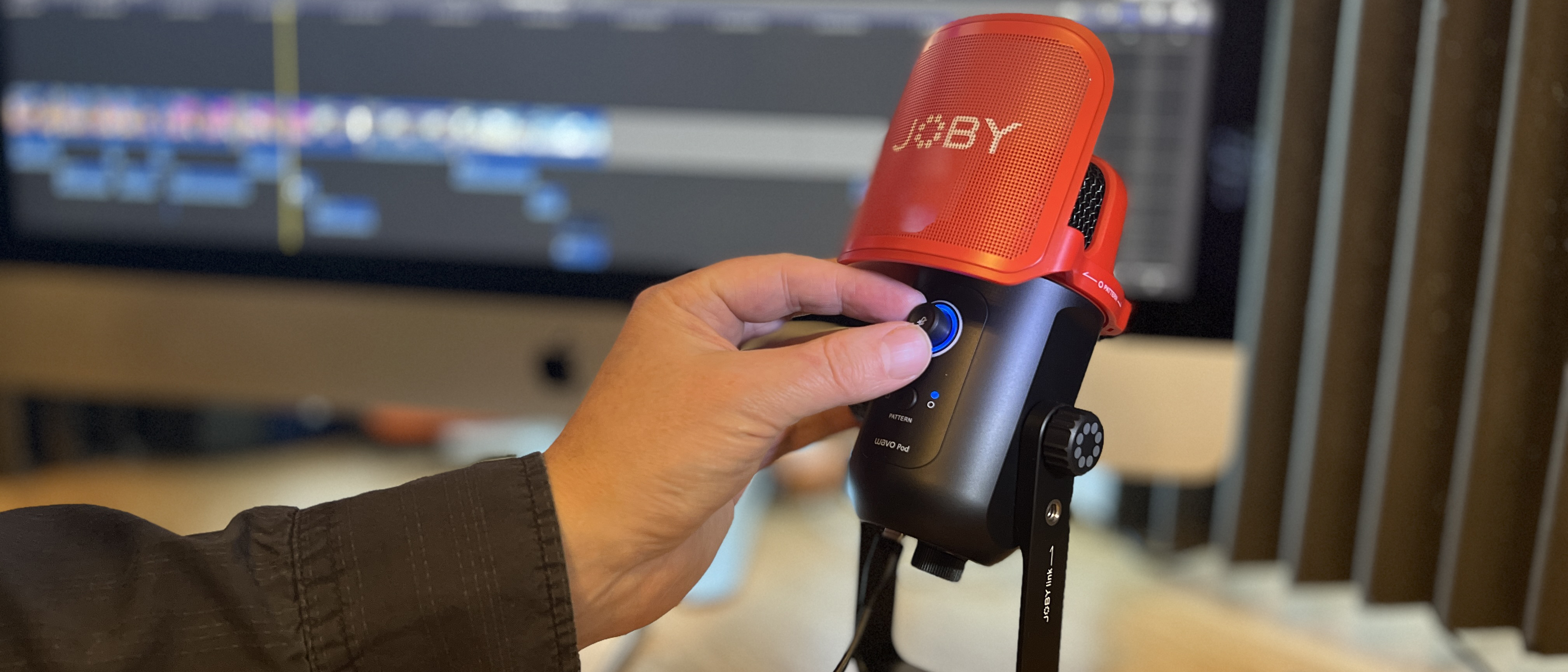Digital Camera World Verdict
The Wavo POD is competitively priced entry-level USB mic that will take the quality of your sound recordings to the next level. It works straight out of the box with PC, laptop or smart phone and can be mounted on a range of tripods and stands if required. It’s perfect for improving the audio production values of voice-over artists or YouTube Vloggers and it looks great on your home studio desktop too.
Pros
- +
Relatively inexpensive compared to rival mics
- +
Captures broadcast quality audio
- +
Adjustable gain
- +
Pop shield
Cons
- -
Limited polar pattern choices
- -
Plastic build on mic body
Why you can trust Digital Camera World
The Joby Wavo POD answers a real and growing demand from content creators. Thanks to social media apps and podcast delivery platforms we can easily share our opinions or showcase our hobbies and interests in audio and video formats. We can broadcast straight from our Mac or PC thanks to its built-in mic and camera. However it can be a challenge to capture good quality sound.
A podcast or YouTube video that suffers from flat tinny audio produced by a computer’s built-in mic or has sound diluted by a wash of roomy echoes will soon have its audience moving on to other content. Fortunately Joby has launched the Wav POD – a USB large diaphragm microphone that looks great, won’t blow your budget and will boost your VLOG and podcast’s sound levels from amateur to pro.
The Wavo POD is JOBY is a budget alternative to the similar but well established Yeti range of plug and play USB microphones that are already popular with podcasters, voice-over artists and other content makers. The entry-level Yeti Blue will set you back £119 compared to the Wavo POD’s £89.95 but you do get what you pay for. We’ll talk about some of the differences between these competing mics in the Build and Handling section below.
Specifications
Audio sampling rate: 24bit/48kHz
Recording patterns: Omnidirectional and directional
Controls: Volume, mute, gain controls
Headphone port: Yes
Pop filter: Yes
Key features
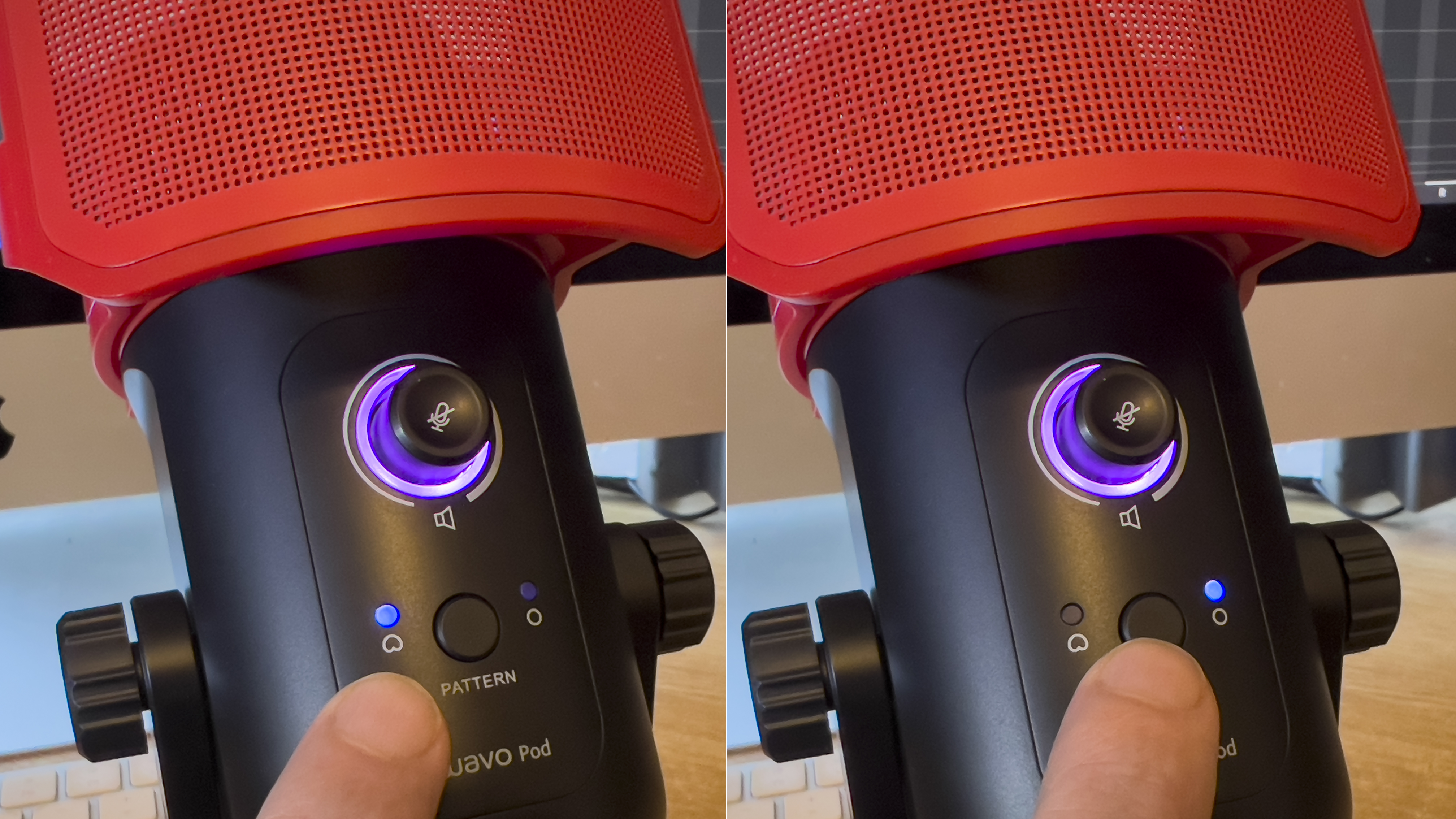
The Wavo POD ships with a USB Type-C to Type-C and a USB Type-A to Type-C cable so you can plug the mic directly into a PC, laptop or Smart Phone and start recording or streaming your sound. It has two selectable polar patterns that change its sensitivity to sound. The most useful Cardioid (heart-shaped) pattern makes the mic sensitive to sound from the front of the mic. This minimises unwanted background sounds such as the whir of your computer’s fan, leading to cleaner audio tracks. If you need to interview someone on the other side of the mic you can tap the Pattern button to switch to an 360º Omni polar pattern and make the mic sensitive to sound from all angles.
A pre-attached orange pop shield adds some colour to the black Wavo POD, which should help make the device an eye-catching co-star in your YouTube productions. The pop shield is designed to soften harsh bangs caused by plosive consonants in sentences such as ‘Peter Piper picked a peck of pickled peppers!’ In practice we found that if you place the mic at a sensible distance from your mouth (about a foot ) then it was difficult to make it ‘pop’ even without the pop shield – though the pop shield did reduce wind noise when we blew on the mic. The pop shield provides an additional function of telling you which side of the mic to talk into thanks to icon arrows that indicate the direction of the Cardioid and Omni polar patterns.
Build and handling
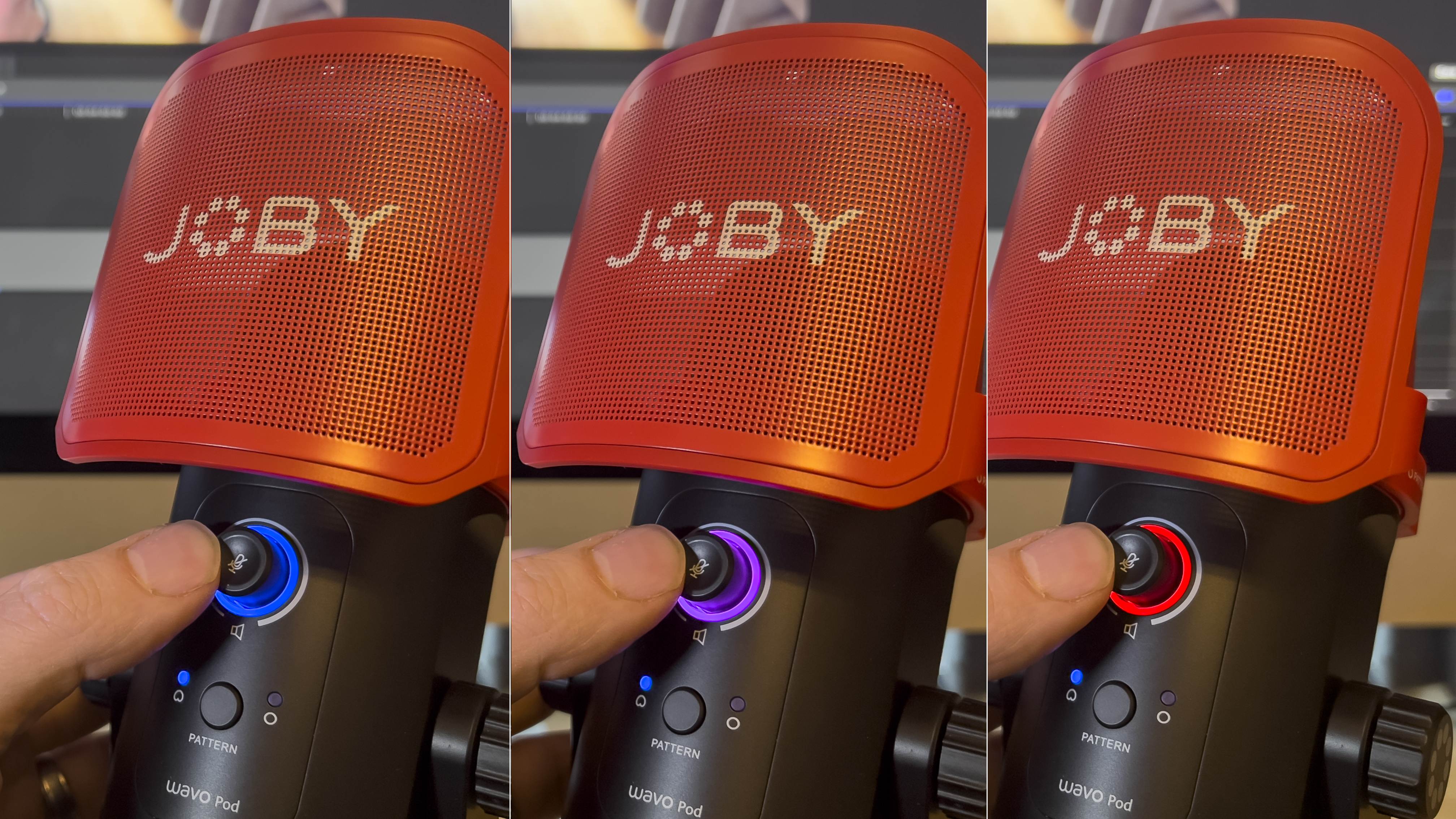
Compared to the Yeti Blue’s metal body and mount the plastic Wavo POD looks and feels cheaper – which of course it is. The Wavo POD is much lighter and also about two thirds of the size of the Yeti Blue, but this could be a bonus if you need to record audio on the go with a light and compact with a laptop and quality USB mic. The weighted stand is the only Wavo POD’s metal component but this solid section gives the mic stability. The Wavo POD can be detached from its weighted metal stand and attached to a tripod (such as the GorillaPod) or fixed to an adjustable boom like the Legato Wave Mic Arm.
Performance
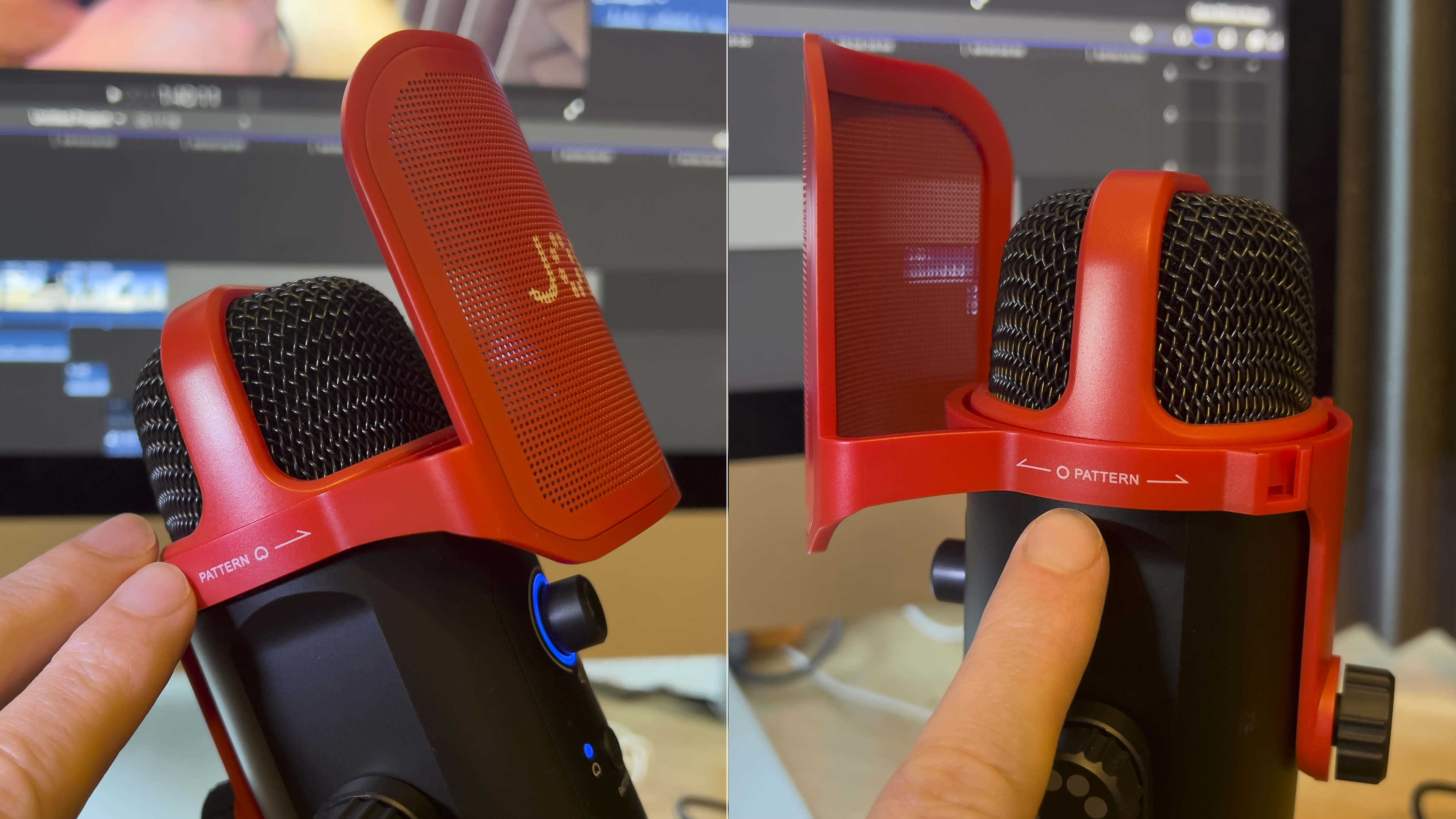
Despite being cheaper, smaller and lighter than the Yeti Blue the Wavo POD captures comparatively excellent sound quality thanks to its 24bit/48kHz audio sampling rates. We found that the Wavo POD’s sound quality was indistinguishable from that captured by a Yeti Blue.
The multi-function knob/button on the front enables you to adjust the volume if you decide to monitor the sound via the built-in headphone jack. A two second press changes the blue light to purple, which indicates that you’re in gain control mode. You can then twist the knob to capture louder or quieter sound levels on your USB attached recording device. Short-pressing the knob activates a red light, indicating that the mic is muted (which is a handy option for when your kids gatecrash a live Zoom call!)
Verdict
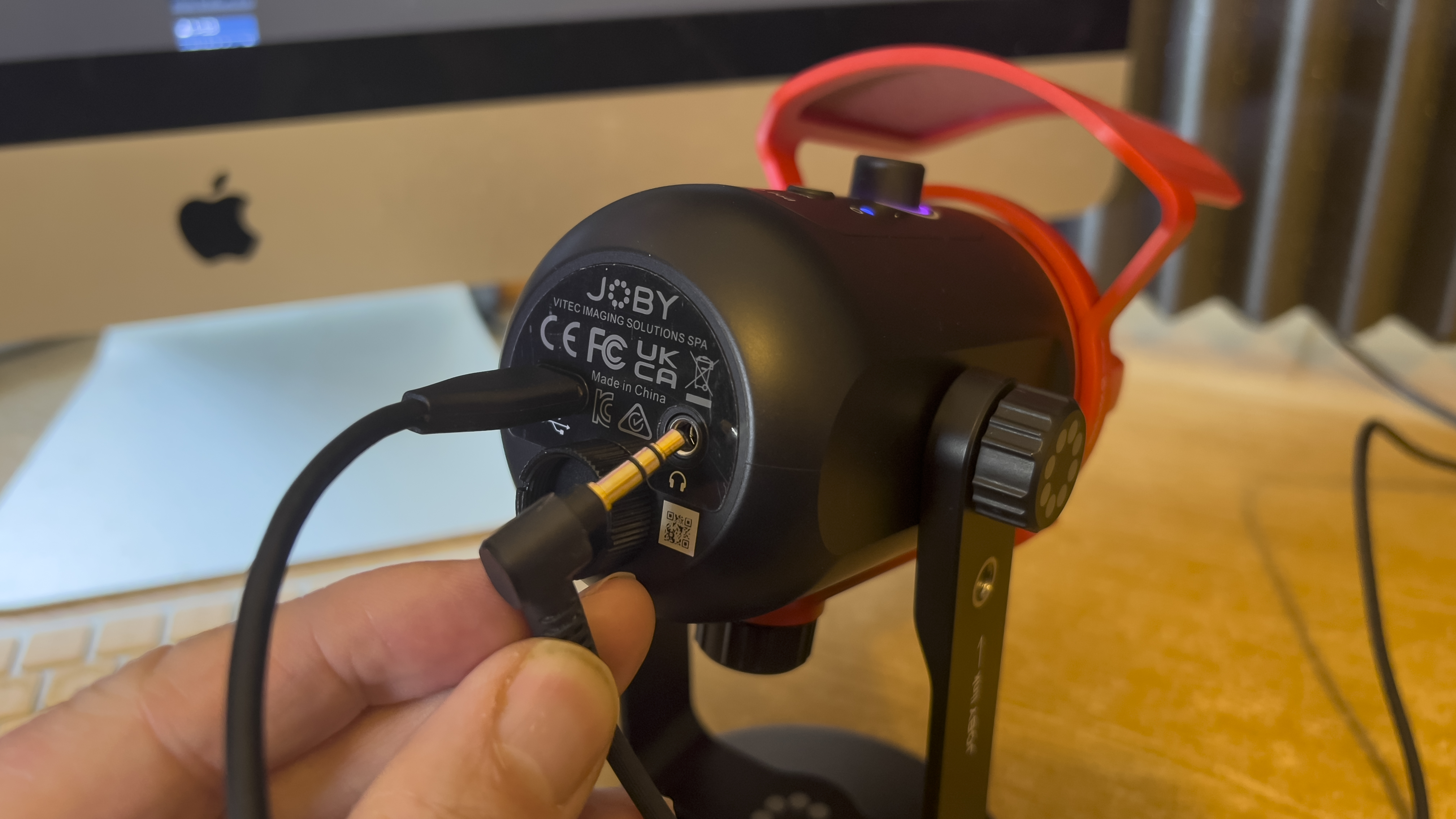
The Wavo POD is the perfect entry-level USB desk mic for those wanting to improve the quality of their sound recordings. The combination of the pop shield and the Cardioid recording field enable you to capture clear broadcast quality audio tracks that suffer less from room echo and other unwanted background noises (though as with most mics you’ll benefit by placing some sound absorbing tiles around your home studio).
However, compared to the Yeti Blue the Wavo POD has a more limited collection of polar pattern settings. The Yeti boasts an additional Hypercardioid setting. This ‘figure of 8’ shaped recording field enables you to capture sound from the front and rear of the Yeti mic (but not unwanted sounds from the sides of the mic.) The Wavo POD’s Omni pattern will let you record an interviewer and interviewee sitting opposite, but it will also add unwanted noises from the sides due to its 360º sensitivity.
All in all, though, it’s an excellent addition to any home recording studio and we highly recommend it.
Read more:
• Best microphone
• Best USB microphone
• Best XLR mic
• Best audio recorders
George has been freelancing as a photo fixing and creative tutorial writer since 2002, working for award winning titles such as Digital Camera, PhotoPlus, N-Photo and Practical Photoshop. He's expert in communicating the ins and outs of Photoshop and Lightroom, as well as producing video production tutorials on Final Cut Pro and iMovie for magazines such as iCreate and Mac Format. He also produces regular and exclusive Photoshop CC tutorials for his YouTube channel.
